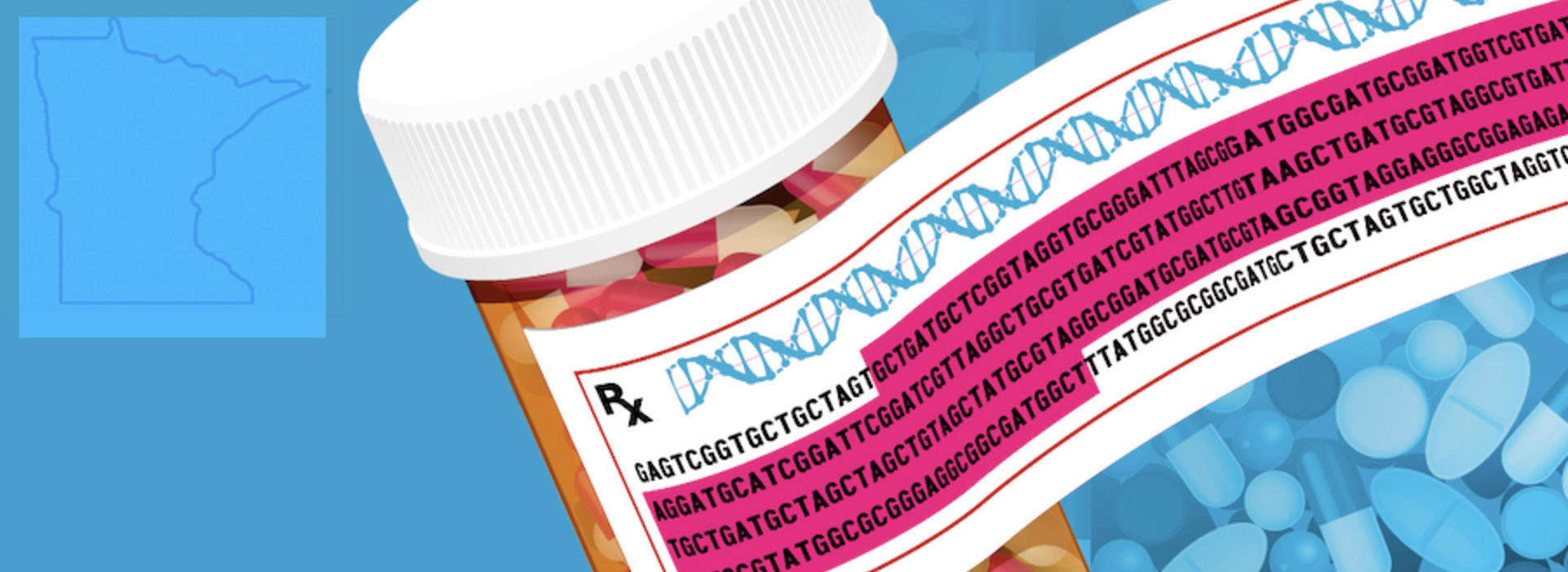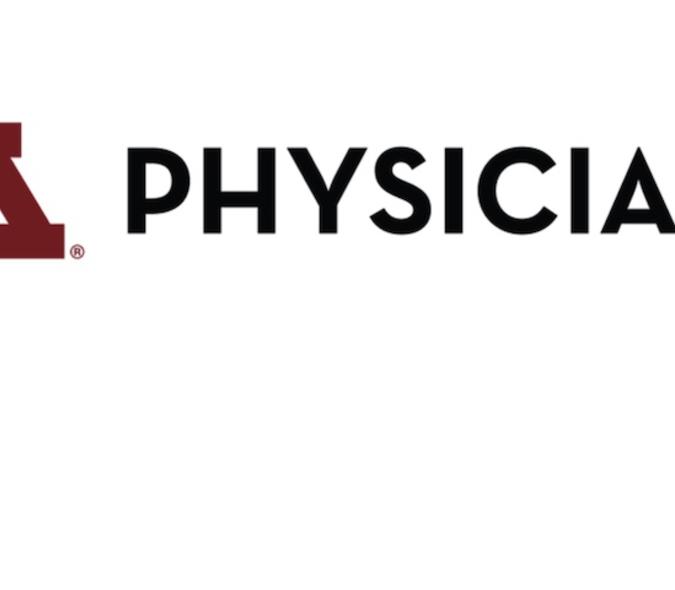
Mroz shepherds pharmacogenomics (PGx) into the clinic
In an ideal healthcare world, the right drug would be used at the right dosage by the right patient at the right time. That’s the goal of the fast-growing field of pharmacogenomics, or PGx, which is the polar opposite of the trial-and-error method of prescribing drugs. PGx seeks to optimize the therapeutic benefit of a medication while reducing the risk of an adverse reaction based on how someone’s genes may affect how that person metabolizes a drug.
Take aspirin, the most widely used over-the-counter drug in the world. No individual metabolizes aspirin in precisely the same way as another. Sometimes the difference comes down to a single DNA letter or a few letters of the more than six billion DNA letters (three billion base pairs) that make up the human genome. A single nucleotide polymorphism or SNP (“snip”) substitution of a DNA letter at a precise location in the DNA sequence can influence how a drug is metabolized and affect its therapeutic benefits or its risk of producing an adverse drug reaction or both. In the case of aspirin, the difference may not be important except in rare instances. In the case of a cancer drug, the difference could be critical.
Laboratory Medicine and Pathology assistant professor Pawel Mroz is leading an effort to take PGx – with its promise of giving the right drug at the right dose to the right patient at the right time – from the lab bench to the clinic. Aligning all these factors using complex genetic and metabolic enzyme information and advanced informatics is an enormous challenge given the stringent regulatory standards that have to be met for PDx to be used routinely in a health system. “In a clinical PDx project as opposed to a research project, you just can’t afford to miss anything,” Mroz said.
Mroz is finishing his third year as an M Health Fairview Learning Health System Scholar (MN-LHS). The program, administered through the Center for Learning Health System Sciences (CLHSS), is a collaboration between the University’s Office of Academic Clinical Affairs and School of Public Health, M Health Fairview, Mayo Clinic, Hennepin Healthcare, and other collaborative clinical sites. It is intended to foster a knowledge base of successful implementation of innovative practices in health care organizations.
Mroz and Pamala Jacobson, distinguished professor in the College Pharmacy and director of its Institute of Personalized Medicine (IPM), are leading an effort described in their paper “Development and implementation of an in-house pharmacogenomic testing program at a major academic health system,” which involves the Department of Laboratory Medicine and Pathology, the College of Pharmacy, and M Health Fairview.
Creating a clinical-grade multiplex PGx testing panel
Most of us, perhaps more than 90 percent, harbor “clinically actionable” genetic variants that may affect how we respond to a medication affected by these variants. The National Academy of Medicine estimates that there are about 1.5 million preventable adverse drug reactions (ADRs) in the US annually, of which about 100,000 result in death. ADRs account for an estimated $3.5 billion in additional healthcare costs.
Could knowledge of our genetic variants and capability of metabolizing medications help us avoid an ADR?
Mroz teamed up with LMP professor Bharat Thyagarajan and associate professor Sophia Yohe in the M Health Fairview Molecular Diagnostics Laboratory to create and validate a clinical-grade multiplex PGx molecular testing panel based on SNPs and other genetic variants. The assay consists of nine genes that affect how 20 medications are metabolized.
Mroz's team is working on a new assay based on next-generation "long read" DNA sequencing (NGS) rather than the current multiplex genotyping. NGS will significantly expand the number of both genes and drugs that can be tested, thus expanding the number of patients who stand to benefit from an understanding of how their genes and drugs interact based on testing results.
CPIC picks up the pace
Pharmacogenomics emerged from the Human Genome Project (HGP), which was completed two decades ago, but Mroz calls the past decade a “game changer” for the field. That’s due to the creation of the Clinical Pharmacogenetics Implementation Consortium (CPIC). “CPIC started putting out well-researched clinical guidelines for individual genes related to PGx – gene-drug pairs -- where you have a gene with a specific function that affects the specific medication dosing,” Mroz said. Since it was established in 2009, CPIC been releasing a couple of guidelines a year. “That has really made it possible to implement pharmacogenomics on a clinical level – taking it beyond the research world and bringing it to patients.” Mroz said more than 200 medications approved by the U.S. Food and Drug Administration (FDA) have pharmacogenomic information on their label that may affect prescribing decisions.
CPIC stresses that its guidelines are designed to help clinicians understand how available genetic test results should be used to optimize drug therapy. CPIC has issued guidelines for 26 gene-drug pairs as of February 2023, but it’s a long and complicated process. It begins with PGx biomarker discovery, validation and standardization, and proceeds to companion diagnostic (CDx) testing used to identify eligible patients for targeted treatments. In the field of cancer diagnosis and treatment, where Mroz and his colleagues are focusing their PGx effort, the FDA has approved some 50 CDx tests for some 30 molecular biomarkers that guide therapy selection for more than 40 FDA-approved drugs indicated for some 20 different types of cancer. The biomarker test, drug therapy, and tumor type have to be aligned.
In their paper describing an in-house PGx program, Mroz and Jacobson and their colleagues detail the process of pharmacogenomic implementation in five independent but interconnected steps, with close attention paid to controls, precision, integration, and feedback systems:
- Selection of a testing platform and assay development and validation
- Selection and development of a reporting informatics pipeline
- Ordering and testing workflow development
- Education of providers
- Creation of a Clinical Decision Support Content Review Committee (CCRC)
In addition to his key role in creating, developing and validating the PGx testing platform, Mroz also co-developed a unique informatics-based clinical decision support (CDS) program called Go4PGx that is informed by CPIC guidelines, drug monographs, and patient information.
Following patient genetic counseling and informed consent, an MHealth Fairview clinician orders the PGx test. The patient’s blood or cheek swab specimen is sent to the Molecular Diagnostics Laboratory for analysis of more than 30 genes and genetic variants that affect enzymes important in drug metabolism. Go4PGx produces a PDF report for ordering clinicians within 7–10 days. In addition to the test results, the report includes "gene-phenotype-drug recommendations based on CPIC guidelines."
UMN Grand PGx Challenge
In 2017, the University launched the UMN Grand Challenge State-wide Pharmacogenomics (PGx) Initiative bringing together faculty from pharmacy, medicine, informatics, and law from the Twin Cities and Duluth campuses. Two years later funds were awarded to create a statewide PGx framework. In 2021, Mroz, Jacobson and their colleagues at the University, MHealth Fairview, the Mayo Clinic, Allina Health, Essentia Health, HealthPartners, Sanford Health, and Children’s Minnesota described “Pharmacogenomics education, research and clinical implementation in the state of Minnesota.” Results of a survey of Minnesotans published last year showed that 84 percent of respondents felt comfortable getting a PGx test for clinical care and most expressed an interest in participating in a statewide PGx database for clinical and research use.
Jacobson's Institute of Personalized Medicine offers a PGx clinical workforce training program for Minnesota pharmacists plus a PGx ECHO program designed to address the lack of PGx education and support for implementation across rural and underserved areas in the Midwest.
“This Minnesota statewide PGx collaboration is unique in the country,” Mroz said. “For it to work we need to have certain rules and guidelines. And that's why with the establishment of clinical decision support and the CCRC committee we were able to garner the interest of other state institutions, health systems and stakeholders to get their input. All of this has to be integrated into electronic medical records. That's the goal.”
Are advancing technologies, clinical science, and regulatory and payer policies in alignment for PDx to become realized and ADRs avoided?
It will be a step-by-step process. “Once we build PGx within the Fairview system, that will have a huge impact in terms of the number of patients benefiting from PGx,” Mroz said. “For successful implementation we will then go to other systems and tell them, look, we've been successful. This will help your patients as well.”
-----------
Image above modified from "Pharmacogenomics: Genomics is helping us choose the right medication at the right dose for each patient.” National Human Genomic Research Institute.



